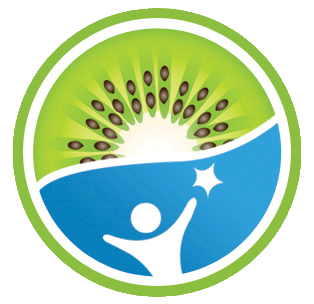What causes post-infectious IBS? Why do some people seem to develop IBS after an illness or a course of antibiotics? How come diarrhea and nausea don’t go away even after the infection is gone?
If you want to learn more about the Low FODMAPs diet for managing IBS, download our Low FODMAPs Recipe Kit: https://feedtosucceed.com/fodmap-recipes/
—— The Causes of Post-Infectious IBS ——
If you’ve ever had a bout of “tummy flu” with diarrhea, what you’ve actually had is a “stomach bug” caused by germs that get into our intestines. These germs come in different forms – such as viruses, bacteria, or even parasites – and cause symptoms such as nausea, vomiting, abdominal cramping and diarrhea.
Sometimes antibiotics are prescribed for infections or illnesses, and the primary illness may not cause the tummy symptoms, but the antibiotics then seem to cause diarrhea or GI issues. Anywhere from 4-36% of people have lingering digestive issues after these types of illnesses or treatment with antibiotics.
—— What Is IBS ——
IBS, or irritable bowel syndrome, is a catch-all term used to describe GI symptoms and stool changes, including gas, bloating, pain, abdominal cramps, and in the case of post-infectious IBS, usually diarrhea. It is one of the most common GI disorders. IBS does not have any underlying disease associated with the symptoms.
—— Treating Post-Infectious IBS ——
It’s a good idea to see your doctor if you think you have post-infectious IBS. Sometimes medications are recommended to help relieve the symptoms, and can get you on a path to a quicker recovery. But medications aren’t always effective.
We know that up to 70% percent of IBS cases are food related and we even know the foods that trigger IBS flare ups. They’re called FODMAPs.
FODMAPs are five families of carbohydrates and they’re in all sorts of food – anything from apples and pears, bread, broccoli, sodas, pizzas, yogurt, and so many more. These are the most common triggers for gas, diarrhea, and GI pain. And for families with IBS, knowing what’s safe to eat can feel like walking through a minefield. Lots of healthy foods, like fruits and veggies, can set off your symptoms. And even foods that normally help with diarrhea or constipation, can trigger IBS symptoms.
—— The Low FODMAPs Diet ——
One of the best ways to actively take control of your IBS is through dietary changes. The Low FODMAPs Diet is an elimination diet that can help relieve IBS symptoms and reveal your personal FODMAPs sensitivity.
During the FODMAPs elimination diet, you will cut out broad groups of foods that are known to be frequent sources of digestive problems. This allows your digestive system to “clear out”, and at the same time your IBS symptoms will subside. After you’ve eliminated FODMAPs for a few weeks, you can then test different types of foods to see which ones prompt reactions.
At the end of the 8-12 week diet, you will feel better, know your personal FODMAPs sensitivities, and be able to take control of your IBS.
To learn more about the Low FODMAPs diet, try out the recipes in the Low FODMAPs Recipe Kit: https://feedtosucceed.com/fodmap-recipes/


